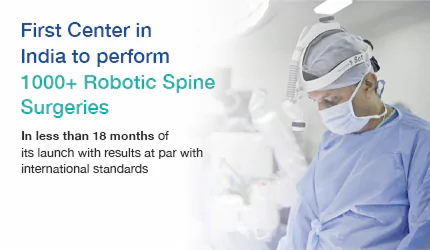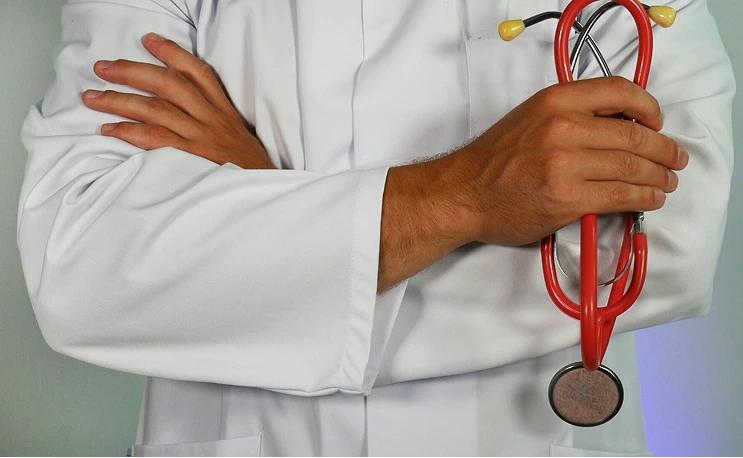When Neck Pain Affects More Than Just Your Neck
If you're experiencing neck pain that shoots down your arm, numbness in your fingers, or weakness when gripping objects, you might be dealing with something more than typical neck stiffness. Cervical disc herniation can cause symptoms that travel far from your neck, affecting your arms, hands, and daily activities in ways that might surprise you
Unlike muscle strain or arthritis, which typically causes localised neck pain, a herniated cervical disc can create a specific pattern of symptoms that interfere with work, sleep, and simple tasks like typing or holding a coffee cup. Understanding your condition and treatment options is essential for making the right decision about your care.
Understanding Cervical Disc Herniation
Your cervical spine (neck) contains seven vertebrae with shock-absorbing discs between them. These discs have a tough outer layer and a gel-like centre that allows for neck movement while protecting the vertebrae. A cervical disc herniation occurs when the outer layer tears or weakens, allowing the inner material to push out and potentially press against nearby nerves or the spinal cord.
What This Feels Like to Patients?
Common symptoms include:
-
Neck pain that may worsen with movement
-
Radiating arm pain following a specific nerve path
-
Numbness or tingling in specific fingers (pattern depends on which nerve is affected)
-
Weakness in arm or hand muscles
-
Shooting pain that travels from the neck to the shoulder, arm, or fingers
What makes this different from other neck problems?
-
Symptoms often follow specific nerve pathways
-
Pain may be worse in your arm than in your neck
-
Certain neck positions may relieve or worsen symptoms
- Coughing or sneezing may increase arm pain
Who Develops Cervical Disc Herniation?
This condition most commonly affects adults between 30-50 years old, but can occur at any age. Common causes include:
-
Age-related disc degeneration (most common)
-
Sudden injury (car accidents, falls)
-
Repetitive strain from work or activities
-
Poor posture over time
Advanced Diagnosis at MIRSS
Accurate diagnosis is crucial for determining the best treatment approach:
-
Comprehensive clinical examination to identify specific nerve involvement
-
High-resolution MRI scans to visualise disc herniation and nerve compression
-
CT scans, if needed, to assess bone structure
-
Electrodiagnostic studies are used when nerve function assessment is needed
-
Advanced imaging analysis for surgical planning when surgery is considered
This thorough evaluation helps determine not only the presence of disc herniation but also whether surgical intervention is necessary and which approach would be most beneficial.
Treatment Options: From Conservative to Surgical
Conservative Treatment First
Most cervical disc herniations improve without surgery through:
-
Anti-inflammatory medications to reduce swelling around nerves
-
Physical therapy focusing on neck mobility and strength
-
Activity modification to avoid aggravating movements
-
Injections in the neck or hands to relieve symptoms
When does conservative treatment work?
-
Symptoms improve within 6-8 weeks
-
Arm pain and numbness resolve
-
Function returns to normal levels
When Surgery Becomes Necessary?
Surgery may be recommended when:
-
Conservative treatment fails after 6-8 weeks of appropriate therapy
-
Progressive weakness in arm or hand muscles
-
Severe pain that significantly impacts daily function
-
Neurological symptoms that worsen despite treatment
Surgical Options: Choosing the Right Approach
The choice between surgical procedures depends on several factors:
-
Location and size of disc herniation
-
Your age and activity level
-
Condition of adjacent discs
-
Your preference for motion preservation vs stability
-
Bone quality and overall health
Anterior Cervical Discectomy and Fusion (ACDF)
When is it recommended?
-
Single or multiple-level disc herniation
-
When stability is a primary concern
-
Significant disc space collapse
-
Bone spurs requiring extensive removal
What does the procedure involve?
-
Small incision at the front of your neck
-
Complete removal of the herniated disc
-
Placement of bone graft or cage to maintain disc height
-
Metal plate and screws to ensure fusion
Advantages
-
Excellent long-term stability
-
High success rates for pain relief
-
Well-established procedure with predictable outcomes
Considerations
-
Eliminates motion at the fused level
-
Potential for adjacent level stress over time
-
The fusion process takes 3-6 months
Artificial Disc Replacement (ADR)
When is it recommended?
-
Single-level disc herniation (occasionally two levels)
-
Good bone quality
-
Desire to preserve neck motion
-
Younger, active patients
-
Healthy adjacent discs
What does the procedure involve?
-
Similar incision to ACDF
-
Removal of herniated disc material
-
Insertion of artificial disc device
-
No fusion required
Advantages
-
Preserves natural neck motion
-
May reduce adjacent level stress
-
Faster return to activities
-
No fusion healing period
Considerations
-
Newer procedure with less long-term data
-
Not suitable for all patients
-
May require revision surgery over time
-
Specific anatomical requirements
Advanced Surgical Technology at MIRSS
At MIRSS, we employ cutting-edge technology to enhance surgical precision and patient outcomes:
Robotic-Assisted Surgery
Our MazorX Stealth Edition (Medtronic) – an advanced spine robot with integrated navigation capabilities – provides:
-
Precise surgical planning using 3D imaging of your specific anatomy
-
Real-time surgical guidance during disc removal and hardware placement
-
Enhanced accuracy in screw placement and implant positioning
-
Reduced tissue trauma through optimised surgical approaches
Intraoperative Imaging
High-resolution cone beam CT during surgery allows:
-
Real-time verification of complete disc removal
-
Immediate confirmation of proper hardware placement
-
Assessment of adequate nerve decompression
Specialised Surgical Environment
Our state-of-the-art modular operating theatres feature:
-
Integrated robotic and imaging systems
-
Optimal positioning for cervical spine procedures
-
Advanced monitoring capabilities
The Surgical Process at MIRSS
Before Surgery
Your surgical team will:
-
Create detailed surgical plans using robotic planning software
-
Review your specific anatomy and herniation pattern
-
Discuss the chosen approach and expected outcomes with our dedicated spine anaesthesia team
During Surgery
Both ACDF and ADR typically take 1-2 hours:
-
Anaesthesia: Our specialised spine anaesthesia team ensures your comfort and safety throughout the procedure.
-
Positioning: Careful positioning to optimise surgical access while protecting your airway.
-
Robotic-Guided Access: Precise incision placement and tissue dissection using navigation guidance.
-
Disc Removal: Complete removal of herniated disc material under direct visualisation.
-
Reconstruction: For ACDF, placement of graft and hardware; for ADR, insertion of artificial disc device.
-
Verification: Final imaging to confirm adequate decompression and proper hardware position.
Our specialists or staff trained in cervical spine procedures ensure optimal coordination throughout your surgery.
Recovery: What to Expect
In the Hospital
-
Most patients stay 1 day after surgery (depends on patient to patient)
-
Pain management with appropriate medications
-
Early mobilisation with nursing assistance
-
Monitoring for any complications
Recovery Timeline
First 2 Weeks:
-
Initial wound healing
-
Gradual increase in activity
-
May require soft cervical collar for comfort
-
Follow-up appointment for wound check
Weeks 2-6:
-
ACDF patients: No collar required, gradual activity increase
-
ADR patients: Earlier return to normal neck motion
-
Beginning of physical therapy
-
Return to desk work is often possible
Months 2-6:
-
ACDF patients: Fusion healing process, progressive strengthening
-
ADR patients: Full motion restoration, return to all activities
-
Regular follow-up to monitor healing
6+ Months:
-
ACDF patients: Solid fusion is typically achieved
-
ADR patients: Full artificial disc function
-
Return to all appropriate activities
-
Long-term follow-up as needed
Rehabilitation with MIRSS
Our dedicated spine physiotherapy team creates personalised recovery programs focusing on:
-
Neck mobility restoration (especially important for ADR patients)
-
Strengthening exercises appropriate for each procedure
-
Posture training to prevent future problems
-
Activity progression tailored to your specific goals
What Improvements to Expect
ACDF Outcomes:
-
Arm pain relief: Usually significant and rapid
-
Neck stability: Excellent long-term stability
-
Motion: Reduced at the fused level, but often not functionally limiting
-
Success rate: High for pain relief and neurological recovery
ADR Outcomes:
-
Motion preservation: Maintains near-normal neck movement
-
Pain relief: Similar to ACDF for appropriate candidates
-
Adjacent level protection: May reduce stress on neighbouring discs
-
Activity return: Often faster than ACDF
Warning Signs to Watch For
Contact your doctor immediately if you experience:
-
Increasing arm weakness or new numbness
-
Severe neck pain or headaches
-
Signs of infection (fever, wound drainage)
-
Difficulty swallowing or breathing
-
Any neurological changes
Success Rates and Long-term Outcomes
Both ACDF and ADR have excellent success rates when performed for appropriate indications:
-
Pain relief: 85-95% of patients experience significant improvement
-
Neurological recovery: Most patients see improvement in arm symptoms
-
Return to activities: The majority return to their desired activity level
-
Long-term satisfaction: High patient satisfaction rates for both procedures
Important considerations:
-
ACDF: Proven long-term results, but motion loss at the fused level
-
ADR: Motion preservation, but less long-term data available
-
Adjacent level changes: May occur over time with either procedure
-
Revision surgery: Occasionally needed for either approach
How do We Choose the Right Procedure for You?
The decision between ACDF and ADR involves careful consideration of:
Factors favouring ACDF:
-
Multiple-level disease
-
Significant instability
-
Poor bone quality
-
Previous neck surgery
-
Older age
Factors favouring ADR:
-
Single-level herniation
-
Good bone quality
-
Desire for motion preservation
-
Younger, active lifestyle
-
Healthy adjacent levels
Why Choose MIRSS for Your Cervical Spine Care?
Comprehensive Expertise
-
Experienced cervical spine surgeons specialising in both ACDF and ADR procedures
-
Multidisciplinary team including dedicated anaesthesia and physiotherapy specialists
-
Specialised OR staff trained in advanced cervical spine surgery protocols
Advanced Technology
-
Advanced spine robotic surgery with integrated navigation
-
Intraoperative high-resolution imaging for real-time surgical guidance
-
Comprehensive surgical planning using 3D modelling
-
State-of-the-art operating theatres designed for cervical spine procedures
Patient-Centered Care
-
Thorough evaluation to determine the optimal surgical approach
-
Personalised treatment planning based on your specific anatomy and goals
-
Comprehensive rehabilitation programs
-
Long-term follow-up and support
Questions to Ask Your Doctor
Before making treatment decisions, consider asking:
-
Am I a candidate for both ACDF and ADR, or is one better for my situation?
-
What are the long-term implications of each procedure for my lifestyle?
-
What are my specific risks based on my age and health?
-
How will this affect my work and recreational activities?
-
What happens if conservative treatment doesn't work?
Moving Forward
Cervical disc herniation can significantly impact your quality of life, but both ACDF and ADR offer excellent outcomes for appropriately selected patients. The key to success lies in:
-
Accurate diagnosis and evaluation
-
Appropriate patient selection for each procedure
-
Expert surgical execution
-
Comprehensive rehabilitation
Understanding the differences between these procedures and working with an experienced team helps ensure you receive the treatment that best matches your specific situation and goals. Whether you ultimately choose motion preservation with ADR or the proven stability of ACDF, modern surgical techniques offer excellent prospects for pain relief and return to normal activities.
At MIRSS (Manipal Institute of Robotic Spine Surgery), Bangalore, we combine extensive experience in both ACDF and ADR procedures with advanced robotic surgical technology. Our integrated approach – from thorough diagnostic evaluation to personalised rehabilitation – is designed to provide you with the best possible outcome tailored to your specific needs and lifestyle goals. From your initial consultation through long-term follow-up, our dedicated teams in Bangalore work together to support you in choosing and receiving the right treatment for your cervical disc herniation.







